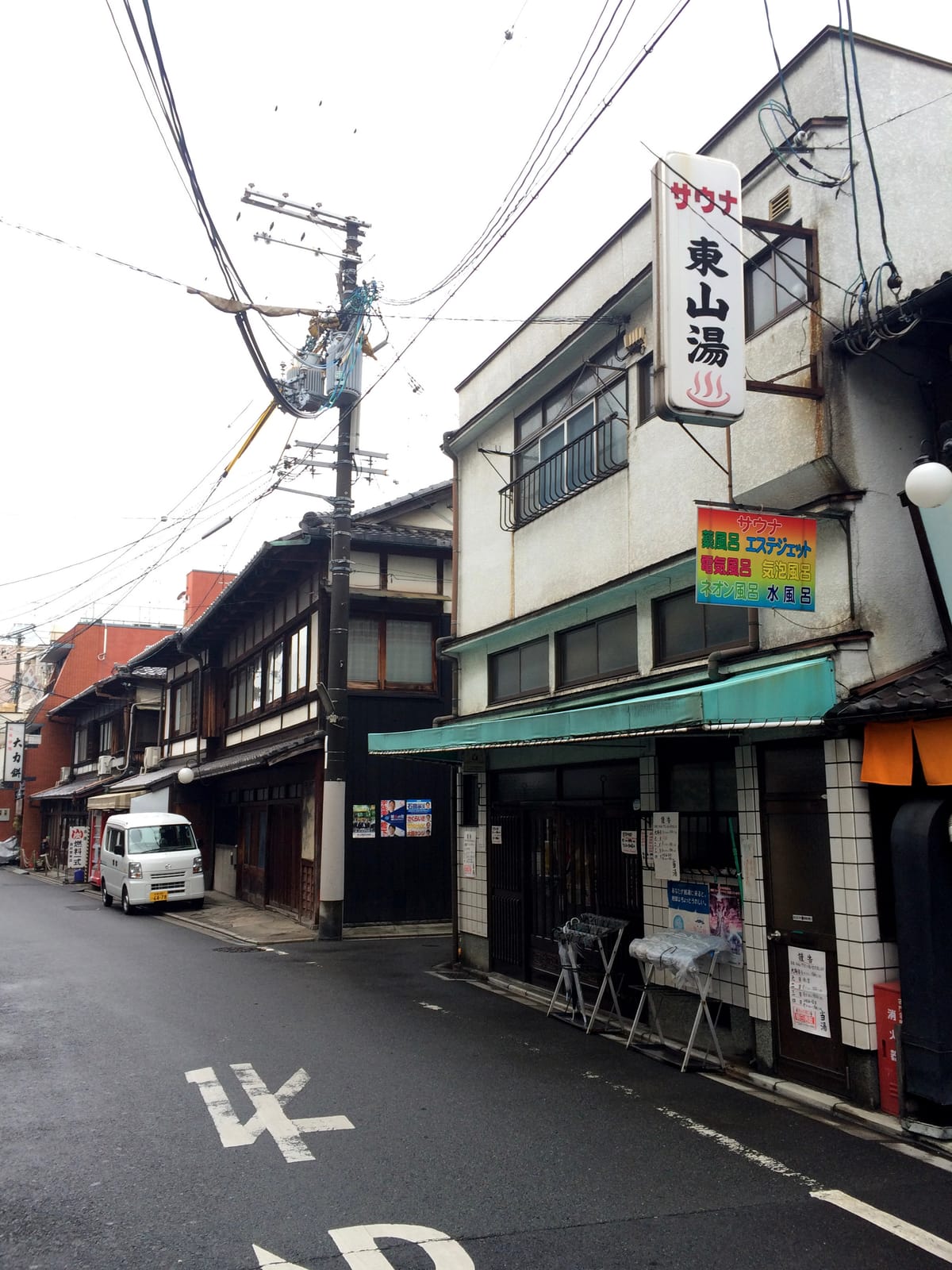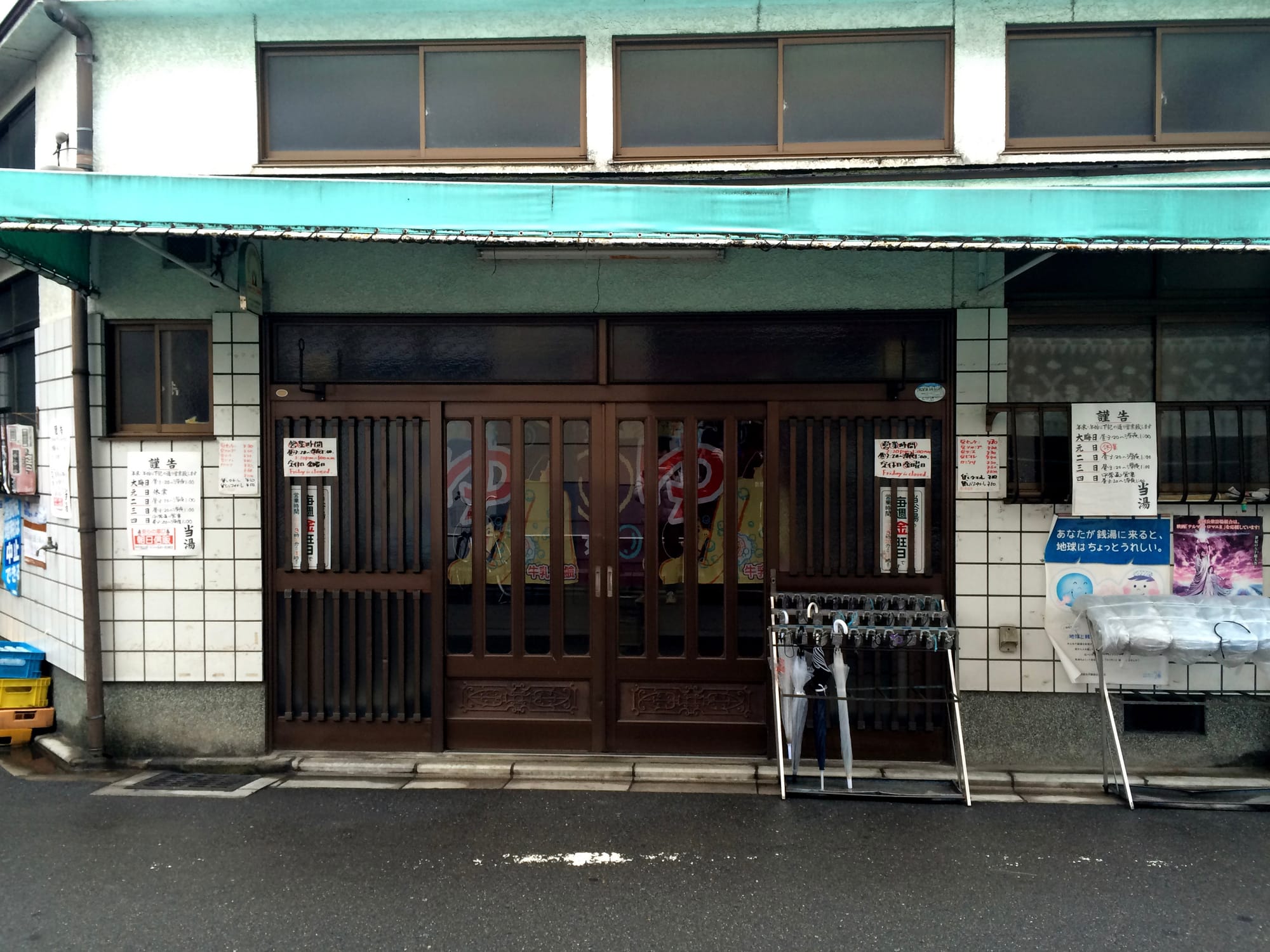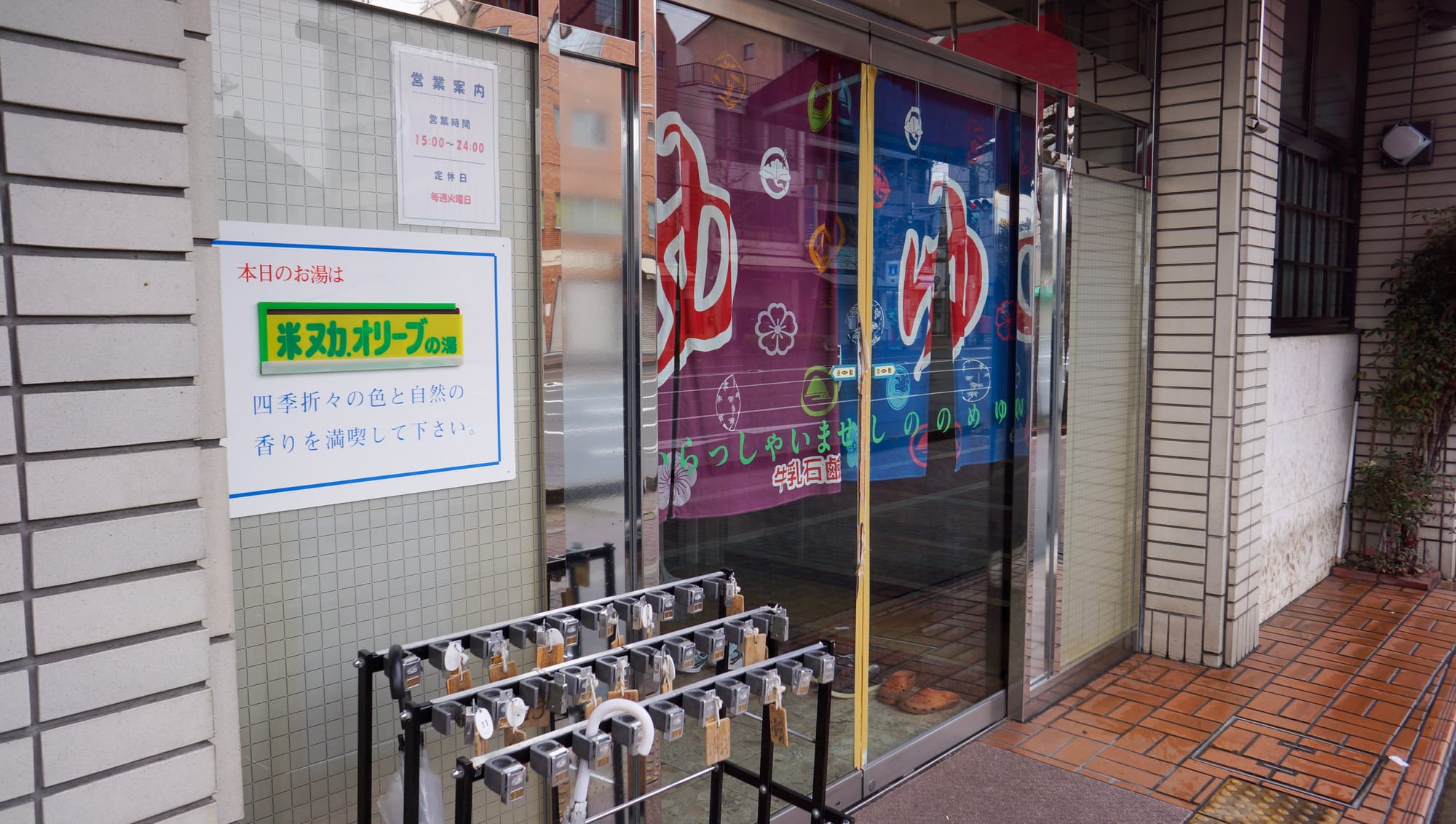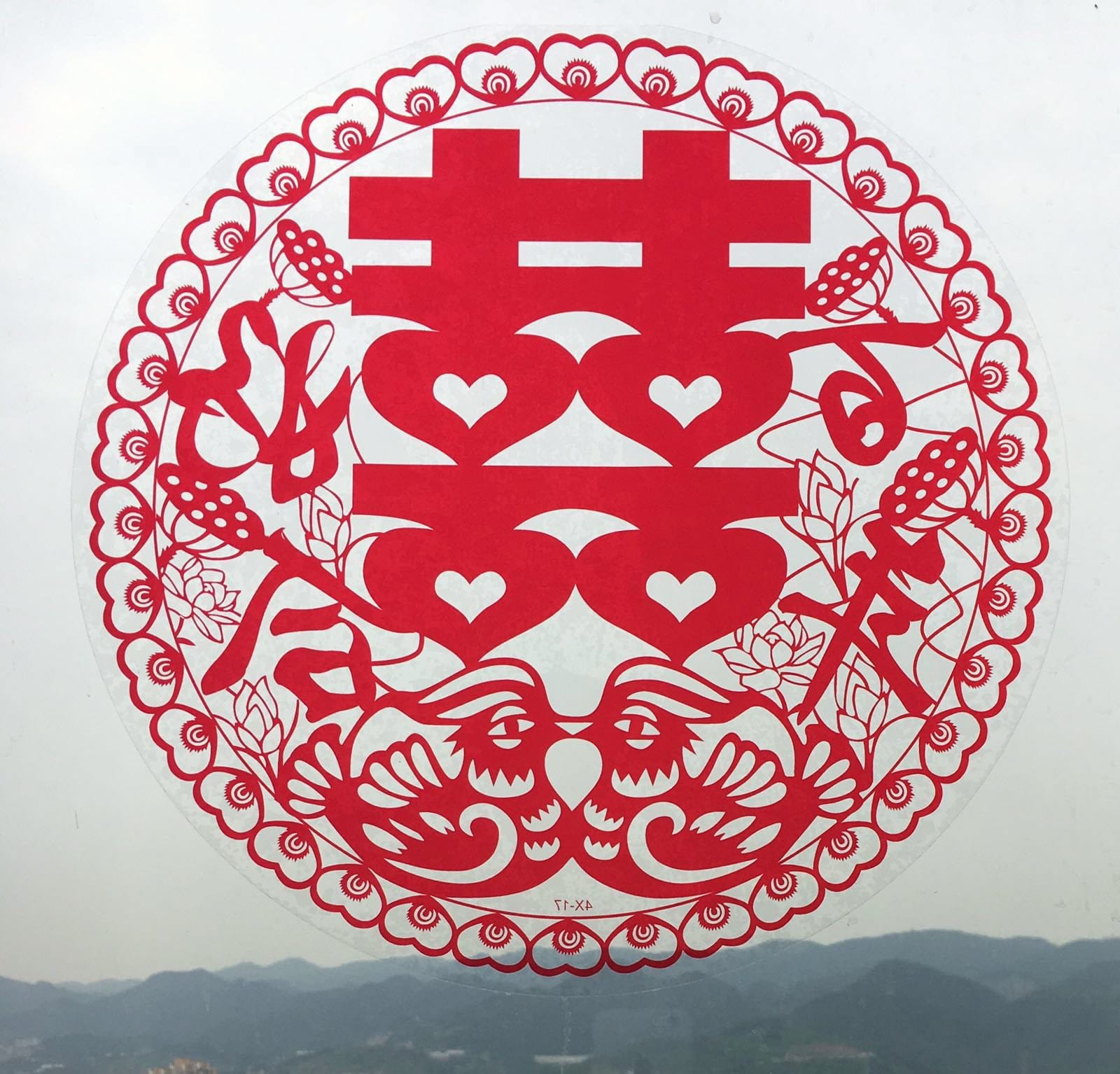Japanese Public Bath

The guesthouse keeper showed how to work the gas stove, demonstrated how to lock the door, and indicated where the toilet was located, but there was no shower or bath. We were told we had to use the public bath, which was only a 10- to 15-minute walk away. The cost of the room was high, and it was assumed there would be a shower or bath, but there were none. After getting settled, we gathered our belongings and made our way to the public bath.
Washing in public is nothing new in Asia. It is common in Korea, Japan, Taiwan, and some places in northern China to visit a spa, where people can bathe in different pools of water, each at a different temperature or with added ingredients like green tea, ginseng, plum, and various herbs thought to cure and soothe tired bones and muscles. The spas are a day out with the family and a chance to bond. Where we are staying, the public bath is the only place we can wash ourselves.

The bath we were pointed to was a 15-minute walk away. On a typical spring day or summer night, there is nothing. With the winds and the cold down to -5, it was a challenge. We had spent the entire day wandering around Kyoto, tired and a bit stinky. I found the traditional symbol for the bath. The exterior of the bath was the same as anywhere else, resembling a storefront more than a bathhouse. There were two curtains – one pink and one blue. We assumed to determine the different sides for men and women.

After taking off our shoes outside, an older man took 300 Yen ($ 2.50 US) from each of us inside. The interior was clean but old. The white tiles were faded. The benches were well-worn. The place was not too crowded. There were the light fragrances of cologne and aftershave. There were 10 people of mixed ages from 5 to 65.
We got undressed and started cleaning and washing ourselves on the plastic stools in front of the taps and sprays. A bucket to put our cleaning supplies was there, along with another bucket to fill and drench ourselves with. We continued this process until we were clean, then went to dip in the various pools.
Like the spas, there are cold pools of water (15°C/59°F), mild pools (25°C/77°F), and two hot ones (40°C/104°F). There was also a green tea one for healing. Green tea is supposed to help heal sore joints and muscles. The hot ones were nice after a long day walking on the hard stone floors of castles and the wooden floors of temples. After our dips, we washed again.
We had to rent a towel for 30 Yen ($ 0.25 US). Our bodies felt good and relaxed. We got dressed, put on our shoes outside, and then walked off into the darkness. On the way to the baths, we had to wear gloves. On the way back to the bed and breakfast, we didn’t.
